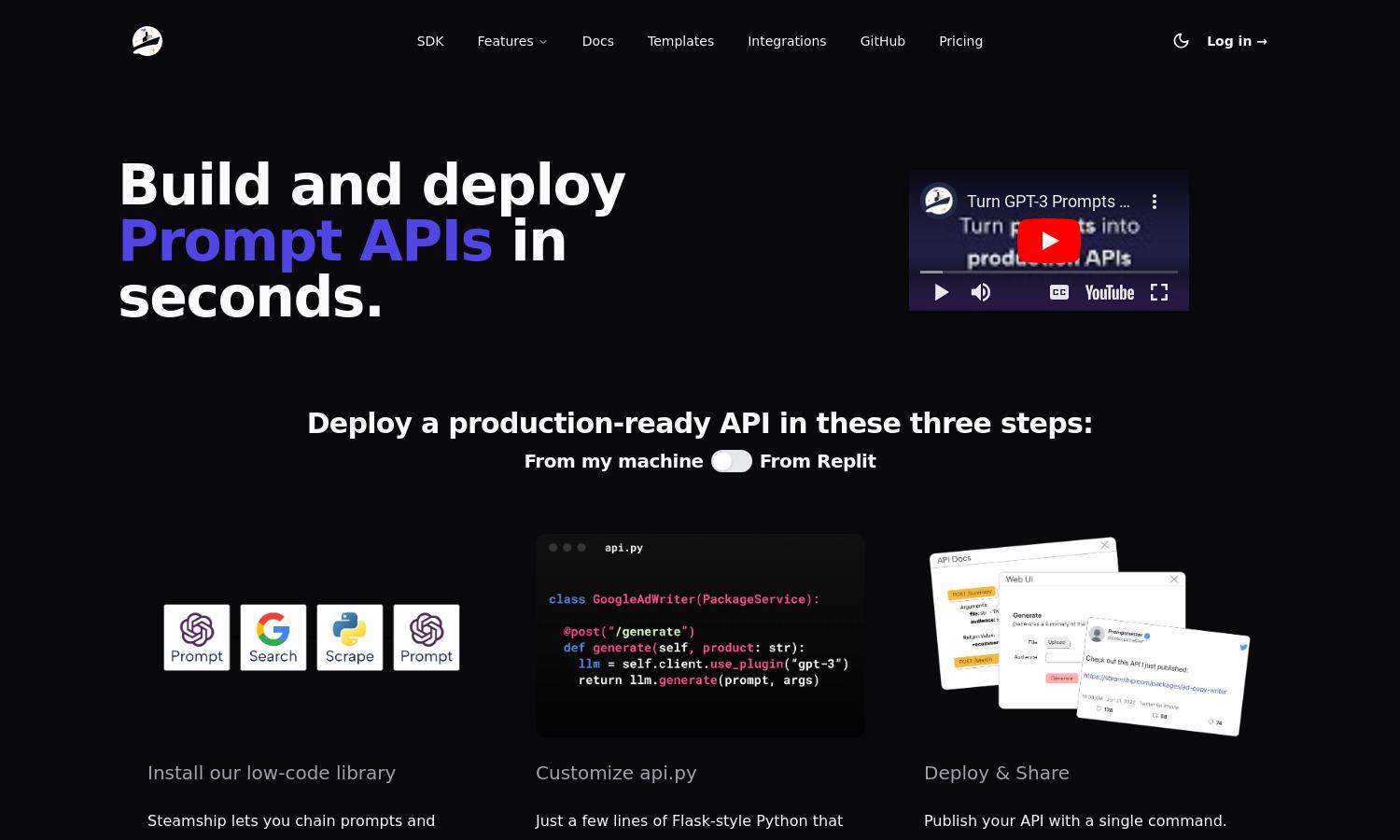Steamship

About Steamship
Steamship is a fast, user-friendly platform designed for developers who want to create and deploy Prompt APIs effortlessly. With its innovative low-code library and simple Flask-style configuration, users can quickly set up production-ready APIs, streamlining their workflow and enhancing project efficiency.
Steamship offers flexible pricing plans tailored for developers, from free starter options to paid tiers with advanced features. Higher subscriptions provide additional API usage, priority support, and enhanced performance, making it valuable for businesses needing scalable solutions for their API needs.
Steamship features a clean, intuitive user interface that promotes efficient browsing and API management. Users enjoy seamless navigation through straightforward deployment processes and accessible documentation, ensuring a user-friendly experience that simplifies everything from setup to sharing their Prompt APIs.
How Steamship works
Users interact with Steamship by first installing the low-code library and configuring their project with a minimal Flask-style Python script. After setting up their API in api.py, they can deploy it with the command 'ship deploy', receiving a unique URL for sharing and testing. The platform focuses on ease of use, allowing creators to launch their APIs rapidly and effectively.
Key Features for Steamship
Low-Code API Deployment
Steamship's low-code approach allows users to deploy APIs effortlessly by using streamlined commands and a simple configuration. This enables developers to focus on creating innovative solutions without being bogged down by complex coding, ultimately enhancing productivity and speed.
Prompt Chaining
Steamship enables users to chain different prompts and models easily, enhancing the functionality of their APIs. This unique feature allows for complex interactions that simplify user input and outputs, promoting more advanced applications and creative user experiences.
Flask-Style Configuration
The platform’s Flask-style configuration makes it easy to customize APIs with minimal coding effort. This user-friendly approach allows developers to seamlessly integrate various functionalities, ensuring quick adaptations to their projects and fostering an efficient API development process.
You may also like:








